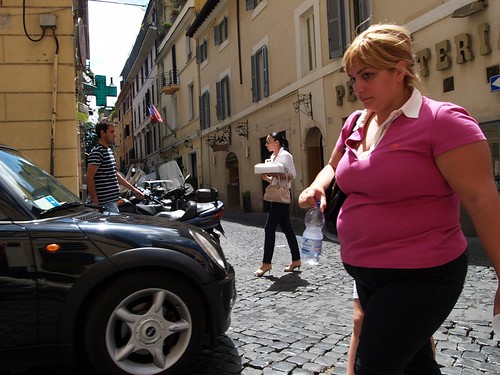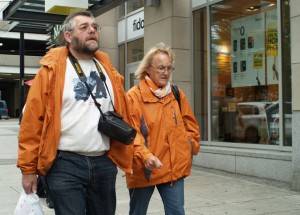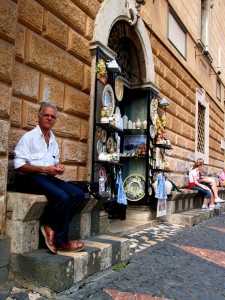There’s been a lot of talk in these parts about how damaging and disastrous the Olympics are shaping up to be. Most of this talk seems to really be centred on the immediate problems of traffic, road closures, security threats (real and imagined), cost, and so on. Holding the Olympics here required us to make a deal with an organization who’s ideas about democaracy and civic participation are, to be polite, considerably different than our own. I think the only way to tell whether the Olympics will really be worth it is to look at the whole idea of this kind of big event and what we can get out of it in the long term.
I grew up here in Vancouver before Expo 86 and I’ve learned some things about our economy, urban culture, and civic social life since then and how they differ between the late 70’s/early 80’s and now.
Vancouver was a very provincial city well into the 1980’s. Historically, the wealth we created was sent away in the form of profits for outside interests who controlled our economy. These interests were sometimes European but usually from Montreal and Toronto. You can contrast this with Chicago. Chicago is not much older than Vancouver but it was much more the centre of its own economy and therefore the wealth generated there stayed there. If you ever travel to Chicago, it shows. The art and architecture are both examples of a city that was able to, to some extent set the terms for its own future.
Vancouver culture and social life was a curious mix of old time pioneer excess and the constricted mores of the Presbetyrians who ran the place for most of the 20th century. While we had some successful cultural phases (mid-century modern architecture and late 70’s punk are two that come to mind), none of them were enough to create our own urban culture or change our economic or cultural position within Canada.
After Expo 86 we began to see ourselves as a post-industrial metropolis and we had some ‘world-city’ currency to capitalize on it. Although some of our most significant land and housing development since then has been carried out by national and international development countries, we’ve been able to dictate, at least to some extent, the form of that development in a way that helps us achieve some of the goals we’ve set for ourselves. “World city” is a misunderstood term but there is a reasonable stable academic understanding of it. By most measures, Vancouver is a 3rd tier world city. We’ll never be New York or Tokyo (1st tier) or even as important as Toronto (2nd) but expo 86 allowed us to be visible to others around the world on our own terms, not based on what Upper Canada thought we should be or be seen as.
Big events let us create an image of ourselves that we can purvey to outsiders. We can use a big event to define ourselves to the rest of the world. Image and perception are, in some ways, quite important. They are a way to tell people around the world what we think and what we stand for. These messages are not short term but are something we define over longer periods of time as we mature. These are not necessarily commercial messages, either. Both the short-term irritation of the Olympics (and having to deal with the authoritarian IOC) and the mid-term hassle of financing the Olympics (assuming the doom & gloom debt predictions are true) could well be worth the cost if we are able to use the attention and opportunity of this event to continue to build our own urban culture and economy in a way that we think works best for us.
This opportunity to communicate what we think our city is to the rest of the world is critical to Vancouver because we can not rely on our own nation to communicate our message our way. Essentialy, we never get an even break from our nation or the cultural & economic “empire” we live in if we rely on them to communicate to the world about us. The message will always be delivered on their terms and from their perspective. Canada’s messages to the world are intrinsically linked to Toronto’s vision of itself as Canada’s Primate City and any message they send about the rest of the country is conflicted by that vision. In addition, we are, an odd outpost on the edge of the American cultural and economic “empire” and their messages about us continually seem to reflect that.
Even the original history of British Columbia and Vancouver Island reflects this conflicted and inaccurate National imagery. The Hudson Bay Company (the original colonizer of Vancouver Island), under the Governorship of James Douglas was a surprisingly progressive entity that seemed to respect and, in some ways, promote the diversity of the early inhabitants (both colonial and native). This history is nothing like that of the colonialists who took over central and eastern canada and yet “national” histories of British Columbia do not seem to understand or convey this fact.
One obvious example of what can be acheived when we are able to disseminate our image of ourselves to the world is the ‘Vancouver model” of urban development which was the result of the aforementioned land and housing development carried out by international companies who were willing to adhere to, at the time, unique requirements for urban development in North America.
In the future, we may look at the current campaign to make Vancouver the “Greenest City” as another example of this successful city-building. Only time will tell if this will have the same impact as “Vancouverism” or whether it will be something else that comes along in the next few years.
There is one last, very important, reason that we need a big event to help us communicate with the world. Our “Vancouver Experiment” in urban development isn’t finished and we need continue to travel our own path to solve the remaining problems.
The basic North American land-development model is based on cheap land and a low overall metropolitan population. The result is a housing system based on single-family dwellings and a transportation system based on the private car. We’re at a mid-point in the evolution to a better urban model which should make us a better city for the future. Our better urban model should help us withstand the end of oil, allow us to build an inclusive, safe, peaceful urban culture, and attract economic activity that lets us pay the bills. But we’re suffering from the fact that we’re not finished. We don’t yet have enough well-functioning urban neighbourhoods so housing is way too expensive. We aren’t the most expensive city in the continent but our current housing stock isn’t sufficient with these current land values. We need to continue to “urbanize” our inner suburbs (which includes much of the City of Vancouver) so that there is housing and community for all. Our Metropolitan population itself is now too large for our low overall housing density so our transportation system doesn’t function properly. This is exacerbated by our land characteristics (our buildable land is hemmed-in by water, mountains, and the border) so relying on car travel from the suburbs creates too many choke points and the suburban density does not support mass transit.
We have to keep going to make sure that the benefits of ‘Vancouverism’ are available to everyone who’s here and the only way we’ve been able so far to do that is to get our message out to the rest of the world so that we can ensure that our terms of engagement with the rest of the world, whether cultural, economic, or social, are based on our values.



